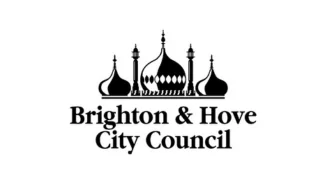At St Luke’s, we understand the importance of children developing a correctly formed and free-flowing handwriting style. By teaching children to produce quality handwriting automatically, we ensure that they can concentrate on what they are writing rather than how they are writing each letter. To achieve this goal, we believe that specific teaching is needed from the Early Years Foundation Stage right up to Year 6.
Penpals Handwriting Scheme
We use the only handwriting scheme to be recommended by The National Association of Handwriting (of which St Luke’s is a member), the Penpals Handwriting Scheme.
The way this scheme teaches how to write each letter is as simple and fail-proof as possible, with letters taught in formation families:
- Long legged giraffe letters: l, i, t, u, j, y
- Curly caterpillar: c, a, d, o, s, g, q, e, f
- One-armed robot: r, b, n, h, m, k, p
- Zig zag monsters: z, v, w, x
Images of these formation families can be accessed here.
Please note that we don’t teach the smaller ‘t’ used in the Penpals scheme, instead teaching that ‘t’ is a tall letter like ‘h’ and ‘b’.
Following the most current research, the children are taught to write each letter correctly first before they are taught how to join them.
For more detailed information on our approach to handwriting and the research on which it is based, follow this link to our handwriting policy.
How Handwriting is Taught at St Luke’s
Here is a brief overview:
Early Years Foundation Stage (Reception)
Children starting school in Reception arrive with a wide variety of pre-school experiences and are at many different stages of developing their early writing skills. It is important to understand that writing is a process that begins long before a child learns how to form letters with a pencil. The following foundation skills need to be in place before children can successfully start the formal process of learning to write individual letters:
- Well-developed gross motor control
- Good posture and core control
- The ability to cross the midline
- Bilateral coordination
- A good pencil grasp (click here to see the ‘birdy beak’ pencil grip that we use to introduce a good pencil grasp to the children)
- Well-developed fine motor control
- The ability to form basic patterns and shapes
- Secure understanding of positional language such as up, down, backwards, forwards, at the side, top and bottom
- How to sit correctly at a table
In the EYFS, teachers deliver targeted support to each child which matches their current stage of pre-writing skills. This is further reinforced, strengthened and developed through our continuous provision (the resources we provide for the children to interact with independently and creatively) These activities will continue as they learn formal letter formation.
Staff make sure our children use a correct pencil grip for all pen and paper activities and not just handwriting. We ensure that they know how to hold their paper correctly on the table, where to start writing and how to form letters correctly. Over time, this daily repetition means correct letter formation becomes automatic, efficient and fluent allowing our children to concentrate on developing other areas of their early writing skills.
Year 1
During this school year, children focus on ensuring that the height of their letters are correct in relation to each other and that they sit on the line. They will begin to learn to join some pairs of letters within a word. They will be introduced to two types of joins:
- Diagonal joins
- Horizontal joins
Year 2
The main aim this year is for the children to become fluent and develop an automatic style. New joining letters this year are
- Joins from ‘q’
- Joins to and from ‘r’
- Joins to and from ‘s’
- Joins from ‘f’
Year 3
Children will refine their handwriting and make sure that the size and proportions of all letters and the spaces between letters and words are consistent.
New joins introduced are:
- Joins from ‘p’ and ‘b’ to a short letter, an ascender and an anti-clockwise letter
Year 4
In Year 4 children will focus on keeping ascenders and descenders parallel and practise writing at increased speed. They are introduced to the print alphabet for captions, headings, labels and posters.
Year 5 and 6
By this stage children will be able to use correctly joined up writing for most of their learning. Teachers revise any joins or aspects of handwriting that children are still finding difficult and focus on building consistent, fluent and automatic handwriting.
Throughout their time at St Luke’s, children, as well as their teachers, will review their handwriting frequently, revisiting letter formation and joins to ensure they make the best progress that they can.
How Can You Help Your Child at Home?
You can do loads to help your child develop fantastic handwriting!
- It is important that children hold their pencil as well as sit correctly when they write. Click on this link for a guide to the correct pencil grip and posture to encourage your child to use when they are writing at home.
- Always ask your child to sit at a table when they write as this will help their posture.
- Sit with your child as they practise and watch how they form their letters. It is so important that children learn the correct formation when they first find out about each letter. You can find details of the correct letter formation here. Please note that we don’t teach the smaller ‘t’ used in the Penpals scheme, instead teaching that ‘t’ is a tall letter like ‘h’ and ‘b’.
- Keep each practice session brief (10-15 mins) but practise often!
- You can also improve your child’s fine motor skills by encouraging them to draw. There are over one hundred fabulous ‘draw along’ lessons on Youtube recorded by author and illustrator Rob Biddulph. Here’s the link to his channel: Draw with Rob
Make Practising fun:
- Have a small selection of handwriting materials readily available at home. Soft pencils fibre-tip pens and some sheets of A4 typing paper are enough for a start. If you would like some handwriting paper for older children, you can find it here. The small dots go on the left hand side of the page as your child writes.
- Offer your child a special pencil or a rainbow of coloured ones. Don’t just give them words to copy. Try simple word puzzles, anagrams, a game of hangman, or ask them to brainstorm lists around a theme to give writing practice a purpose. They could also keep a diary, make lists or leave you notes!
- You don’t always have to use paper! A foggy mirror, patch of mud, or bowl of leftover sauce make great surfaces. Whether your child’s practicing with their fingers, a stick, or a pencil, inspiring their creativity will lend appeal to writing.
- Encourage drawing and puzzle games. In order to develop the physical requirements of writing — holding a pencil correctly, posture, control, dexterity, coordination — the more time your child spends manipulating objects, the better. Even using a knife, fork or spoon can help them develop their fine-motor skills!
If you are worried about your child’s handwriting:
- Speak to your child’s teacher. They will be able to tell you what particular skills or letters your child needs to develop. You can also complete the handwriting videos below with your child.
Want to know more?
Click here to read St Luke’s handwriting policy.
Handwriting Videos
This series of videos show how we teach handwriting at St Luke’s and were made over the 2020/2021 lockdown to support junior children learning at home. You can ask your child to follow these lessons with you. They are grouped according to what stage the children are on in their handwriting journey. Please note that the ‘f’ shown in these videos does not follow our updated handwriting policy – please see here for the correct formation. Click on the warm up and lesson name to access each video:
1. Letter formation lessons: for children who need more practice at forming individual letters correctly so they start and end in the correct place.
Week 1 Letter Formation lessons
Week 2 Letter Formation lessons
Week 3 Letter Formation lessons
Week 4 Letter Formation lessons
Week 5 Letter Formation lessons
2. Beginning to join lessons: for children who are beginning to join and need lessons on how particular letters are joined together.
Week 1 Beginning to join lessons
Week 2 Beginning to join lessons
Week 3 Beginning to join lessons
Week 4 Beginning to join lessons
Week 5 Beginning to join lessons
3. Building Fluency Lessons: for children who need to learn how to develop speed and confidence (fluency) in their handwriting
Week 1 Building Fluency Lessons
Week 2 Building Fluency lessons
Week 3 Building Fluency lessons




